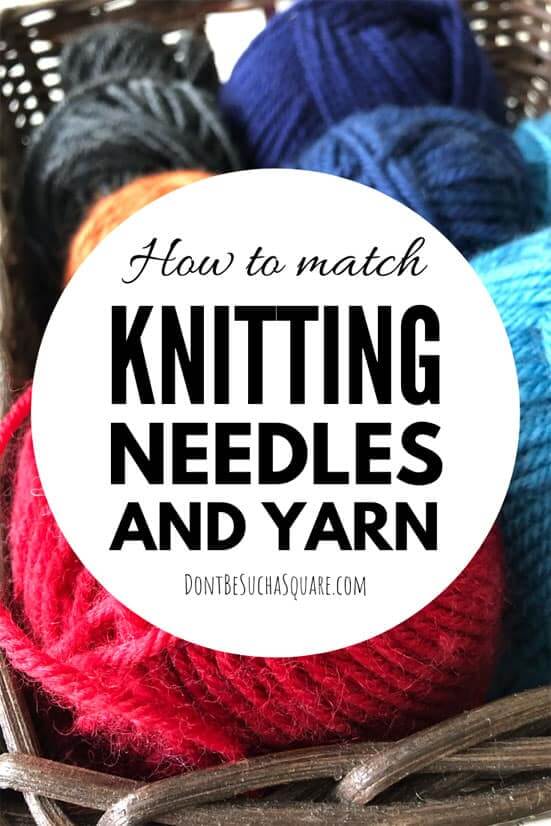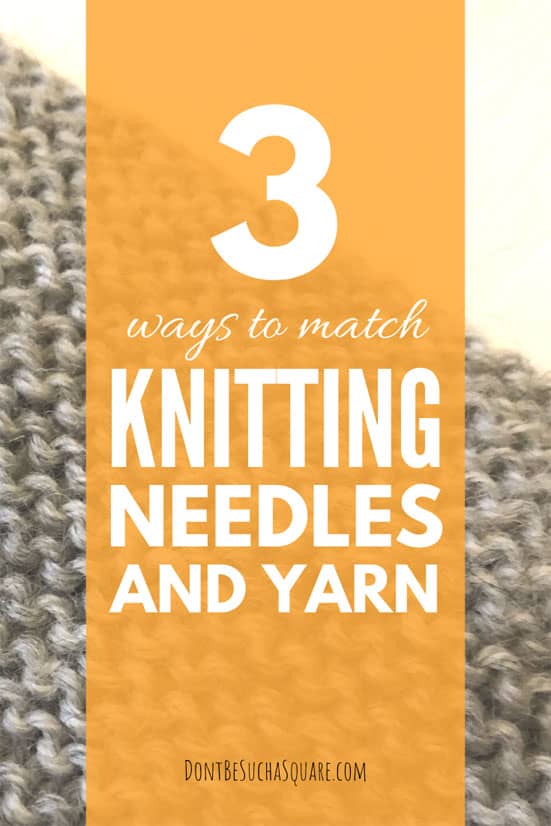
How to match yarn and needles for knitting
Today we’re diving into the art of matching yarn and needles to be able to knit with success!
Do the size matter?
Oh yes, when matching yarn and needles it does. The size of your needles will affect both the length and width of your finished piece as well as your knitting experience.
The size of your needles in comparison to the weight (thickness) of the yarn will determine how dense your fabric will turn out. A thin yarn and a large needle will create a thin fabric with big stitches and holes, like a spiderweb.
Thick yarn and small needles will make a dense and stiff fabric that will be sturdy but uncomfortable and without drape.
Three ways to match yarn and needles
There are a couple of ways to match yarn and needles. None of them are more right or wrong than the others just different. It all depends on how you like to work and what information you have on hand, and a bit on how experienced you are!
The information you need is often on the yarn label
When you buy yarn it usually comes with a label of some sort. It can be a wrap around a hank or a label stuck into a yarn ball. If you take a minute to look at that label you’ll see that’s it’s a lot of good information there.
The recommended needle size is one of them. Depending on where you buy your yarn from, the size may be specified in different sizing systems. If it’s not the same system as you have needles in you can use the needle size conversion chart from this post.
The yarn label also has information on how much yarn there’s in your skein, which fibers the yarn is made of, and how many meters or yards there are in a specified amount of yarn.
The symbols can be a little different depending on where you live, but the most common is a little picture of a pair of straight needles and a number next to it. The number is the needle size recommended by the manufacturer.
Have a pattern? Then follow the instructions!
If you have a pattern follow the directions for yarns and needles and make a swatch to see if the combination of yarn and needles works for you.
If you don’t get the results you’re hoping for, that would be the number of stitches and rows by an inch/10 cm stated as the gauge in the pattern don’t despair.
If you got a higher number than the gauge the pattern is written for you need to change to larger needles. This way your stitches will be bigger and you will need fewer to knit an inch / 10cm.
Got a smaller number? Then you need to make smaller stitches to fit more, this is done by using smaller needles.
Reading tip:
––> You can read more about gauge here: Measuring gauge
No pattern and no label?
If you don’t have any information on recommended needles for your yarn or a pattern that suggests a certain yarn and needles there are two ways to go.
You can either wrap the yarn around a needle and count how many wraps you get in an inch. This is called wpi (wrap per inch) and is one way of determining yarn weight.
If you know the wpi for a yarn you can use my yarn weight conversion chart to see which needle size that’s suitable for the yarn. You can also use it to translate wpi to your preferred system for yarn weights. This chart is also useful if you shop for yarn abroad, as there are a few different ways of dividing yarn into weight groups, just as for needle sizes.
Reading tip:
––> Yarn weights explained + free yarn weight conversion chart
––> Knitting needles conversion chart

